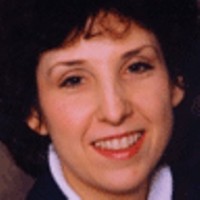Did the property/casualty insurance industry dodge a bullet or does good risk management explain its ability to withstand $25 billion in losses from Superstorm Sandy? Experts debated the question at a recent industry conference.
While a rating agency analyst contends that good risk management is protecting insurers as they face a new normal level of catastrophe losses, other experts believe luck is playing a bigger role than skill.
Speaking at the Property/Casualty Insurance Joint Industry Forum earlier this month, Matthew Mosher, senior vice president and chief ratings officer for A.M. Best in Oldwick, N.J., said the strong capital position of the industry prior to Superstorm Sandy was not the only factor helping the industry to withstand losses from the event now estimated to be in the $20-$25 billion range by catastrophe modeling firms.
When A.M. Best evaluates Sandy’s impact, “the other thing that comes through is the risk management that we’ve seen within the industry,” Mosher said.
“We aren’t seeing any one company where there’s a major issue,” he said, noting that this is true even for companies that he previously believed might have too much concentration of risk in the Northeast. “For the most part, companies have managed [the spread] well and they have been able to diversify themselves enough so [Sandy] hasn’t had any major impact.”
Mosher continued: “There are some [carriers] that probably had outsized losses in terms of what they would have liked, and I expect those companies will make some changes in…their portfolios. But there is nothing [here] that we look at as a financial strength risk.”
In contrast, V.J. Dowling, managing partner Dowling & Partners Securities, said Sandy “was a wake-up call for the industry,” warning insurers to consider “what could have been.”
“A $25 billion event is a big event, but given the wind speed and the flood level, it shows what could happen if things had gone a different way,” Dowling said. It also highlights the question of “what is the new normal as far as level of catastrophe losses,” he said.
Reviewing results “decade by decade” reveals that loss ratios have continued to increase – “and we have not had the Big One yet,” he added.
Dowling and Mosher spoke on a panel of external experts, who examined insurer impacts from the outside. At a later session of insiders – executives of P/C insurance companies – Ed Rust, Jr., chair and chief executive of State Farm, echoed Dowling’s remarks.
“We talk about Sandy, or we can go back to talk about Katrina [or] Northridge [or] Andrew or Hugo. Those fortunately were somewhat spaced out. What do you do if you roll all those into a four-year period?
“This industry in many ways has had a remarkable way to heal itself given time. But the question becomes, ‘How much time do you have?'”
Touching on the post-loss assessments and rebuilding efforts now underway, Rust asked, “Will we be able to get the land-use, the building codes in place that are going to help mitigate [the] damage not if another storm comes in, but before the next one comes in?”
“It will happen,” he continued. “We are just naïve [to say], well, I survived that and I don’t have to worry about it.” Or to think that it will be 99 years before insurers have to worry about the next 1-in-100-year storm. “It doesn’t really work that way,” Rust said.
“Are we capitalizing on what we learn,” the State Farm executive asked.
Separately, during an interview with Insurance Journal, Julie Rochman, president and chief executive officer for the Insurance Institute for Business & Home Safety, said, “One of the things we should learn is that we got lucky.”
“The next storm could absolutely carry higher winds. So as we’re rebuilding, we shouldn’t just focus – as insurers or society at large – on the specific types of loss that Sandy caused. [We need] to take the opportunity as we’re rebuilding and repairing to look at the potential for wind damage as well.”
Rochman said another lesson from Sandy “is that our ability to forecast losses is still not all that good – and that the theoretical performance of buildings and the actual performance are very different.”
IBHS is “obsessed with…closing that gap” so that insurers and reinsurers can better understand how buildings fail, where vulnerabilities are, and what their potential portfolio losses will look like for specific projected events.
Mosher told IJ that carriers have “done a much better job in dealing with data” and understanding their catastrophe exposure than they had in the past.
“When you see something like Sandy, there’s always that thought – if we only knew this or paid attention to that” on the part of carriers whose earnings take a hit. But for the most part, insurers have “a much better feeling for where their exposure is,” he said. “They are monitoring it better. You don’t see companies that go through major solvency issues following an event,” he said.
Mosher said that because Sandy was an earnings rather than a capital event, he does not anticipate any industry-wide retreat from the Northeast market. (Additional reporting by Andrew Simpson.)
Was this article valuable?
Here are more articles you may enjoy.


 Survey Shows Majority of Florida, California Homeowners Seeing Higher Insurance Costs
Survey Shows Majority of Florida, California Homeowners Seeing Higher Insurance Costs  North Carolina Adjuster and Son Charged With Embezzlement in Roof Jobs
North Carolina Adjuster and Son Charged With Embezzlement in Roof Jobs  Jury Awards $80M to 3 Former Zurich NA Employees for Wrongful Termination
Jury Awards $80M to 3 Former Zurich NA Employees for Wrongful Termination  Trump’s Bond Insurer Tells Judge Shortfall Is ‘Inconceivable’
Trump’s Bond Insurer Tells Judge Shortfall Is ‘Inconceivable’ 



